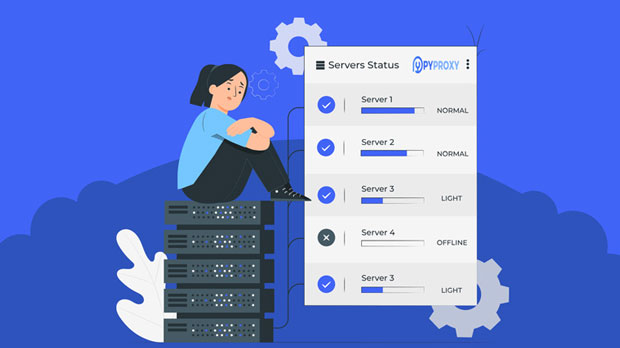When it comes to online privacy, security, and access control, many users choose to use proxies to navigate the internet more securely and anonymously. sock s5 proxies, in particular, have become a popular choice for accessing various online platforms, including Reddit. However, there are several important considerations to keep in mind while using a socks5 proxy to access Reddit, as this combination can offer both advantages and potential pitfalls. In this article, we will explore these considerations in detail, providing you with valuable insights on how to use a SOCKS5 proxy to access Reddit effectively, without compromising security, privacy, or functionality. Understanding SOCKS5 Proxy: What It Is and How It WorksBefore diving into the specifics of using SOCKS5 proxies with Reddit, it’s important to understand what SOCKS5 proxies are and how they work. SOCKS5 is an internet protocol that routes network packets between a client and a server through a proxy server. Unlike HTTP proxies, SOCKS5 is more flexible and can handle various types of internet traffic, including browsing, email, and even peer-to-peer (P2P) protocols. This makes SOCKS5 particularly effective for users who want to keep their online activities private and secure while accessing content on platforms like Reddit.One key benefit of SOCKS5 proxies is their ability to handle various types of data traffic. Whether it’s browsing through Reddit posts, streaming videos, or engaging in online discussions, SOCKS5 can ensure that your internet traffic is routed securely and anonymously.Why Use a SOCKS5 Proxy for Reddit?Reddit, a popular social news aggregation platform, offers vast amounts of content and discussion across a wide range of topics. However, users in certain regions may find themselves restricted from accessing Reddit due to geographical limitations, censorship, or regional content filtering. A SOCKS5 proxy can be a useful tool in bypassing these restrictions by masking the user’s real IP address and making it appear as though they are browsing from another location.Additionally, Reddit’s community guidelines and strict policies may occasionally lead to users being banned or restricted from the platform due to suspicious activity. Using a SOCKS5 proxy can help to mask the real identity of the user, preventing unwanted bans or actions taken against them. However, as advantageous as using SOCKS5 proxies may seem, there are specific issues to keep in mind when accessing Reddit through a proxy.Security and Privacy ConsiderationsWhile SOCKS5 proxies provide a higher level of anonymity compared to traditional proxies, they do not encrypt your internet traffic by default. This lack of encryption means that your online activities could still be vulnerable to monitoring, especially if you're using unsecured networks, like public Wi-Fi. Therefore, it’s crucial to pair your SOCKS5 proxy with an additional layer of security, such as a VPN or SSL encryption, to ensure your data remains private and secure while browsing Reddit.Furthermore, the trustworthiness of the SOCKS5 proxy provider plays a crucial role in ensuring privacy. Some free or unreliable proxy providers may log user activity or inject malicious ads into the browsing experience. Therefore, it’s advisable to use paid, reputable proxy services with clear privacy policies that ensure no logs are kept of your online activities.Speed and Performance IssuesUsing a SOCKS5 proxy to access Reddit may impact your internet speed, as all your traffic is being routed through an intermediary server. The additional layer between your device and the Reddit server can increase latency and reduce download/upload speeds. This can be especially noticeable when browsing content-rich websites like Reddit, which include images, videos, and other media.The quality of the SOCKS5 proxy provider you choose will also affect your browsing experience. Premium proxy services tend to offer faster speeds, lower latency, and higher reliability compared to free or low-quality options. Therefore, when choosing a SOCKS5 proxy for Reddit, it’s important to prioritize speed and performance to ensure an enjoyable browsing experience.Bypassing Geo-restrictions and CensorshipReddit is subject to regional restrictions and censorship in certain countries. Whether it's due to government censorship, network filtering, or geo-blocking, users in some regions are unable to access Reddit freely. One of the primary benefits of using a SOCKS5 proxy is its ability to bypass these geographic restrictions by masking the real IP address of the user.By choosing a proxy server in a country where Reddit is not restricted, users can effectively mask their location and access the platform without facing censorship. This is particularly useful for users in countries with strict internet censorship laws or those traveling abroad. However, it’s essential to select the right socks5 proxy server that matches your location preferences and bypasses local restrictions.Account Bans and Reddit’s Detection SystemsWhile using a SOCKS5 proxy can mask your IP address, it’s important to remember that Reddit employs various security measures to detect suspicious activity. These systems analyze account behavior, IP address patterns, and other metrics to identify potential violations of Reddit’s rules.If you use a SOCKS5 proxy with a poor reputation or share your IP address with other users, Reddit’s detection systems may flag your activity as suspicious. This could lead to account bans, restrictions, or a shadowban, where your posts are hidden from other users without your knowledge.To avoid these issues, it’s advisable to use dedicated proxies, which are not shared with other users. Dedicated proxies offer a unique IP address for each user, ensuring that your online activity is less likely to be flagged by Reddit’s detection systems.Ethical Considerations When Using SOCKS5 ProxiesAlthough using a SOCKS5 proxy can provide anonymity and bypass geo-restrictions, it is essential to consider the ethical implications of proxy usage. Some users may be tempted to engage in unethical practices, such as spamming, manipulating votes, or violating Reddit’s community guidelines.It’s important to use SOCKS5 proxies responsibly and in accordance with Reddit’s terms of service. Engaging in unethical activities not only undermines the integrity of the platform but can also result in long-term consequences, such as permanent bans or legal action.ConclusionIn conclusion, using a SOCKS5 proxy to access Reddit can offer significant benefits, including enhanced privacy, bypassing geo-restrictions, and protecting against unwanted bans. However, it’s crucial to keep several considerations in mind. These include ensuring proper encryption, choosing a reliable and fast proxy provider, and avoiding unethical behavior that could lead to account issues.By understanding these considerations and taking the necessary precautions, users can enjoy a secure, private, and efficient browsing experience on Reddit while protecting their online identity and staying within the platform's guidelines.
Jul 11, 2025



































































